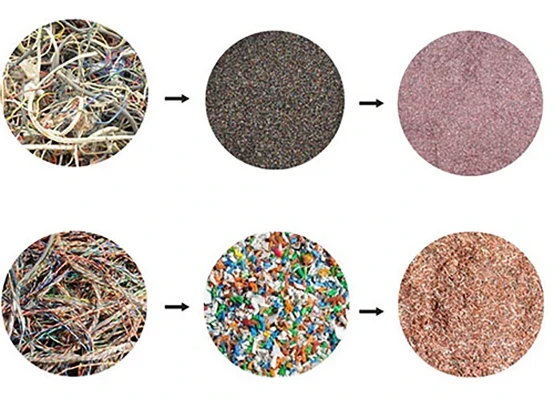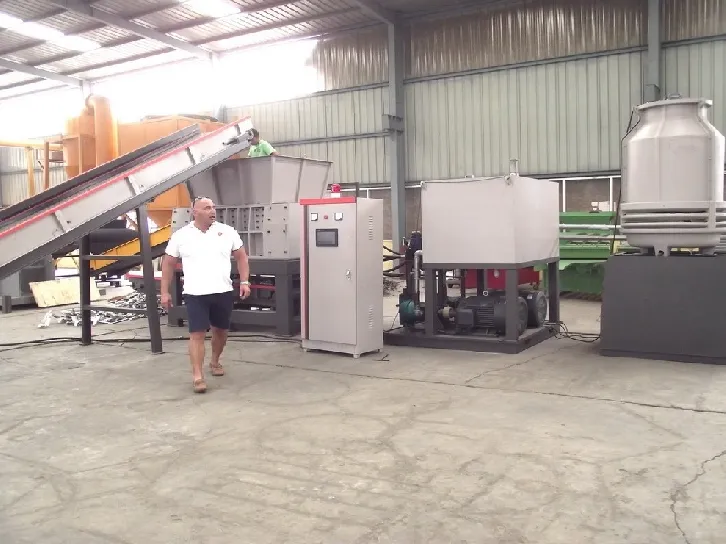Steel recycling plants play a pivotal role in modern sustainable practices, offering both economic and environmental benefits. These facilities are at the core of the circular economy, ensuring that steel, one of the world's most used materials, is recycled efficiently and effectively. By focusing on the four pillars of Experience, Expertise, Authoritativeness, and Trustworthiness, steel recycling plants stand as paragons of innovation and responsibility.

Experience is key in the operational success of a steel recycling plant. With decades of involvement in the recycling industry, these plants have honed their methods to create a seamless process. The introduction of state-of-the-art sorting technology allows for the precise separation of steel from other materials. This experience shows in their ability to handle millions of tons of scrap annually, where each plant's contribution significantly reduces the need for raw steel production. By leveraging past learnings, these plants optimize their processes, minimize waste, and maximize output, ensuring that more steel is returned to the production cycle.
Expertise in metallurgy and industrial processes underpins the operations of steel recycling plants. Engineers and metallurgists work together to perfect the art of melting down reclaimed steel at high temperatures. The process involves shredding the scrap into smaller pieces, which are then melted in furnaces. Through the knowledge of advanced metallurgical techniques, impurities can be removed, and the quality of recycled steel can match that of newly produced steel. This high level of expertise ensures that recycling does not compromise the integrity or utility of steel, making it suitable for a wide range of applications, from construction to the automotive industry.

Authoritativeness in the industry is garnered through strict adherence to international standards.
Steel recycling plants often collaborate with regulatory bodies to set benchmarks in recycling processes. Participation in industry forums and contribution to pioneering research solidify their position as authorities in the recycling sector. Furthermore, they provide guidance and frameworks for other industries looking to improve their sustainability practices. By maintaining compliance with ISO standards and local environmental laws, steel recycling plants prove their commitment to responsible practices, thereby gaining the trust of stakeholders, including clients, governments, and the community.
Trustworthiness is the cornerstone of any successful collaboration between a steel recycling plant and its partners. Transparency in operations is a priority, as these plants often undergo rigorous third-party audits to ensure compliance and operational transparency. Providing clients with comprehensive reports on the recycling rates and the reduction in carbon emissions builds confidence and establishes long-term partnerships. Furthermore, educational initiatives often spearheaded by these plants foster community trust, as they demonstrate the tangible benefits of recycling in reducing environmental impact.
steel recycling plant
A steel recycling plant's product line consists of high-quality recycled steel products that meet the diverse needs of the market. This includes reinforcing bars, structural beams, and flat steel products, all crafted to meet stringent manufacturing standards. By ensuring that their products are as reliable as those made from virgin materials, these plants reinforce their position in the supply chain, as both manufacturers and consumers seek to incorporate sustainable materials.
In the era of climate consciousness, cutting down on CO2 emissions is crucial. Steel recycling plants contribute significantly to this by reducing reliance on mining and refining new ore. The energy consumption in recycling processes is considerably lower than that needed for producing steel from scratch. This energy efficiency translates into reduced carbon footprints, supporting global efforts to combat climate change. Each ton of recycled steel saves significant quantities of limestone, iron ore, and coal, showcasing the resource efficiency of recycling.
In terms of innovation, steel recycling plants are on the forefront of developing new technologies that increase efficiency and reduce waste. Investments in research and development have led to breakthroughs such as improved shredders and furnaces that consume less energy. Future prospects include further automation and the integration of AI to enhance sorting precision, ensuring that recycling processes become more sophisticated and less labor-intensive.
In conclusion, steel recycling plants are indispensable in fostering a sustainable future, driven by their deep-rooted experience, extensive expertise, recognized authority, and unyielding trustworthiness. As they continue to evolve, these plants not only provide high-quality recycled products but also spearhead initiatives that significantly decrease environmental impact, thereby playing a crucial role in the global push for sustainability.


